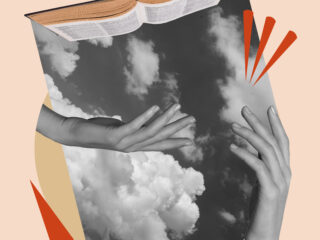As a business, creating a strong and recognizable brand is essential to your success. A brand is not just a logo or a name, it’s an identity that sets you apart from your competitors and speaks to your target audience. To create a compelling brand identity, it’s important to first identify your brand archetype. A brand archetype is a personality type that your brand embodies, and it can guide your design choices and help create a cohesive brand identity.
There are twelve brand archetypes, each with its own unique set of traits, values, and characteristics. By understanding the 12 brand archetypes, you can better identify which one best aligns with your brand values and personality. Here’s a closer look at each archetype:
The Innocent
The Innocent is associated with purity, simplicity, and nostalgia. Innocent brands tend to have a youthful, optimistic feel, and they’re often associated with safety and comfort. Examples of brands that embody the Innocent archetype include Coca-Cola, McDonald’s, and Dove.
Design ideas for Innocent brands might include simple, clean lines, soft colours, and playful illustrations. Fonts should be easy to read and not too complicated.
The Explorer
The Explorer is associated with adventure, independence, and curiosity. Explorer brands tend to be associated with discovery and self-discovery, and they’re often seen as free-spirited and unconventional. Examples of brands that embody the Explorer archetype include The North Face, Jeep, and Patagonia.
Design ideas for Explorer brands might include bold, dynamic imagery, adventurous colours, and unique fonts that stand out. Images might include landscapes, maps, or other visual cues that suggest exploration.
The Sage
The Sage is associated with wisdom, knowledge, and reflection. Sage brands tend to be sophisticated and understated, and they’re often seen as authoritative and trustworthy. Examples of brands that embody the Sage archetype include Google, The New York Times, and CNN.
Design ideas for Sage brands might include sophisticated, understated designs with muted colours and elegant fonts. Images might include books, scrolls, or other visual cues that suggest knowledge and expertise.
The Hero
The Hero is associated with strength, courage, and determination. Hero brands tend to be associated with action, adventure, and achievement, and they’re often seen as powerful and inspiring. Examples of brands that embody the Hero archetype include Nike, BMW, and FedEx.
Design ideas for Hero brands might include bold, iconic imagery, strong colours, and fonts that convey strength and determination. Images might include superheroes, athletes, or other visual cues that suggest strength and perseverance.
The Outlaw
The Outlaw is associated with rebellion, independence, and freedom. Outlaw brands tend to be edgy and unconventional, and they’re often seen as anti-establishment. Examples of brands that embody the Outlaw archetype include Harley-Davidson, Virgin, and Diesel.
Design ideas for Outlaw brands might include edgy, rebellious designs with dark colours and bold typography. Images might include skulls, flames, or other visual cues that suggest rebellion and nonconformity.
The Magician
The Magician is associated with transformation, inspiration, and creativity. Magician brands tend to be innovative and imaginative, and they’re often seen as inspirational and visionary. Examples of brands that embody the Magician archetype include Apple, TED, and Disney.
Design ideas for Magician brands might include innovative, imaginative designs with bright colours and unique typography. Images might include visual cues that suggest transformation and inspiration, such as a butterfly or a lightbulb.
The Everyman
The Everyman is associated with relatability, authenticity, and approachability. Everyman brands tend to be straightforward and down-to-earth, and they’re often seen as trustworthy and approachable. Examples of brands that embody the Everyman archetype include IKEA, McDonald’s, and Walmart.
Design ideas for Everyman brands might include simple, straightforward designs with muted colours and easy-to-read fonts. Images might consist of everyday objects or scenes that are familiar and relatable.
The Lover
The Lover is associated with passion, intimacy, and sensuality. Lover brands tend to be romantic and emotional, and they’re often seen as seductive and alluring. Examples of brands that embody the Lover archetype include Victoria’s Secret, Godiva, and Hallmark.
Design ideas for Lover brands might include soft, romantic designs with warm colours and elegant fonts. Images might include flowers, hearts, or other visual cues that suggest romance and passion.
The Jester
The Jester is associated with humor, playfulness, and spontaneity. Jester brands tend to be lighthearted and amusing, and they’re often seen as fun and entertaining. Examples of brands that embody the Jester archetype include Geico, Old Spice, and Skittles.
Design ideas for Jester brands might include whimsical designs with bright colours and playful fonts. Images might include cartoon characters, silly faces, or other visual cues that suggest humor and fun.
The Caregiver
The Caregiver is associated with nurturing, compassion, and empathy. Caregiver brands tend to be warm and comforting, and they’re often seen as caring and supportive. Examples of brands that embody the Caregiver archetype include Johnson & Johnson, St. Jude Children’s Research Hospital, and UNICEF.
Design ideas for Caregiver brands might include warm, comforting designs with soft colours and gentle typography. Images might include visual cues that suggest caring and support, such as a heart or a helping hand.
The Creator
The Creator is associated with imagination, originality, and self-expression. Creator brands tend to be unique and artistic, and they’re often seen as innovative and imaginative. Examples of brands that embody the Creator archetype include Lego, Adobe, and Etsy.
Design ideas for Creator brands might include unique, artistic designs with bold colours and expressive typography. Images might include visual cues that suggest creativity and originality, such as a paintbrush or a camera.
The Ruler
The Ruler is associated with power, control, and authority. Ruler brands tend to be sophisticated and luxurious, and they’re often seen as commanding and influential. Examples of brands that embody the Ruler archetype include Rolex, Mercedes-Benz, and American Express.
Design ideas for Ruler brands might include sophisticated, luxurious designs with rich colours and elegant typography. Images such as a crown or a sceptre might consist of visual cues that suggest power and control.
By identifying the brand archetype early in the design process, you can create a consistent and recognizable brand identity that accurately reflects the company’s values and personality. Design elements such as colours, fonts, and imagery should align with the brand archetype to convey a cohesive message. With these ideas in mind, you can experiment with different archetypes and design elements until you find the perfect fit for your brand.
Let us help you unlock the power of your brand and give you more insight into how we can utilize archetypes in your business to gain a better understanding of how to target your customers and relate to them on a deeper level contact us today for more information.
Sarah Wilkinson
CEO/Creative Director
Follow Along on Our Social Media




